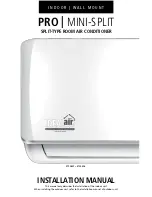
How to Stay Cool with a New Portable Air Conditioner
Because of a new federal test procedure for Portable Air Conditioners, you may
notice that the cooling capacity claims on portable air conditioner packaging are
significantly lower than that of models produced prior to 2017. This is due to
changes in the test procedure, not to the portable air conditioners themselves.
What should I look for first when purchasing a portable air conditioner?
The right air conditioner helps you cool a room efficiently. An undersized unit
won't cool adequately while one that's too large will not remove enough humidity,
leaving the air feeling damp. To find the proper air conditioner, determine the
square footage of the room you want to cool by multiplying the room length by
its width. You also need to know the air conditioner's BTU (British Thermal Unit)
rating, which indicates the amount of heat it can remove from a room. A higher
number means more cooling power for a larger room. (Be sure you are
comparing only newer models to each other- older models may appear to have
a higher capacity, but are actually the same). Be sure to “size up” if your portable
air conditioner will be placed in a very sunny room, in a kitchen, or in a room with
high ceilings. After you’ve found the right cooling capacity or your room, you can
look at other features.
Why is the cooling capacity lower on newer models than on older units?
Federal regulations require manufacturers to calculate cooling capacity based
on a specific test procedure. Models manufactured before 2017 were tested
under a different procedure and cooling capacity is measured differently than
in prior years’ models. So, while the BTUs may be lower, the actual cooling
capacity of the air conditioners has not changed.
What is SACC ?
SACC is the representative value of Seasonally Adjusted Cooling Capacity, in
Btu/h, as determined in accordance with the DOE test procedure at title 10
Code of Federal Regulations (CFR) 430, subpart B, appendix CC and applicable
sampling plans.





































